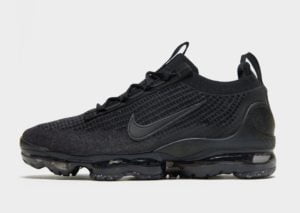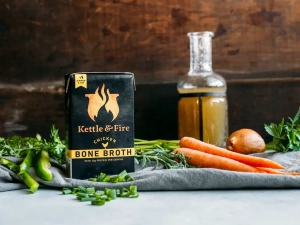It seems like only a couple of years ago people were talking about influencers in inverted commas. But following the success of a few dedicated bloggers and content creators who pioneered the way for a whole new market, those nay-sayers are now beginning to wake up to the reach and potential of influencer marketing.

That boom hasn’t come without its issues, however. Due to high market saturation and the inevitable scammers praying on those who aren’t well-versed in the topic, it can be tricky to navigate for those without experience. Conflicting information on whether you should or shouldn’t be using influencer marketing further muddies the water.
Influencer marketing strategies are harder to navigate than ever, so it’s imperative that you come armed with all the information before parting with your cash.
But here at Gymfluencers, we think it’s a tool that can propel your business into the stratosphere, which is why we’re here to guide you through everything you need to know.
WHAT IS INFLUENCER MARKETING?
If you strip it back to its core, influencer marketing is a type of social media marketing that uses product mentions, reviews and endorsements from influencers. For those of you that are new to the world of influencers and still aren’t quite sure what they do, generally speaking, they create content with a certain niche – often covering areas such as fitness and fashion.
Lifestyle content was the most popular by category in 2020, but much like any thriving industry, the areas covered by influencers are getting more diverse by the day.
So, how does an influencer mentioning your brand or service translate to revenue?
Influencer marketing works because of the high amount of trust, and, funnily enough, influence, that trendsetters have built up with their following. Their recommendations serve as social proof to your brand’s potential customers – a seal of approval if you will.
I know what you’re thinking, aren’t the endless testimonies of influencers for products they probably don’t use a bit meaningless? You’d be forgiven for thinking that, but in short, no. Any influencer worth their salt will only work with brands they would actually use in real life. If not, then their followers will quickly become disengaged and it’ll signal the beginning of the end for their career too. That, of course, relies on finding the right fit, but with a good agency that’s not a problem at all.
It’s also worth noting that while it’s important for an influencer to have a large following to ensure maximum exposure, don’t get too caught up in the numbers. Someone with fewer followers who regularly engages and creates a community feeling will carry far more weight than someone who is largely inactive.

INFLUENCER MARKETING STATS
Statistics should always drive any good business decision, and there is plenty to show that influencer marketing is worth its weight in gold. For example, 93% of marketers have used influencer marketing, which is a testament to how strong the market currently is. What’s more, according to Shopify, 61% of consumers trust say they trust influencers’ recommendations. Meanwhile, only 38% said they trust branded social media content.
Proof that plenty of businesses are looking to learn more about influencer marketing, Google searches for the topic grey by 400% from 2016-2021 in the UK alone. In fact, in the same period, the influencer marketing industry rocketed from a $1.7 billion industry to a $13.8 billion industry. That figure is expected to expand further to $15b by the end of this year. Unsurprisingly, marketers are planning to up their spending on influencer marketing in 2023.
As I was saying earlier, you don’t have to have millions of followers to become an influencer. Micro-influencers have a big part to play in the industry and shouldn’t be overlooked. Influencer marketing statistics show the market share of micro-influencers grew from 89% in 2020 to 91% in 2021.

Similarly, nano-influencers have the highest engagement rate at 5%. We’ll take a bit more of a detailed look at exactly what the different types of influencers are later on, but essentially that means accounts with between 1,000 and 5,000 followers are sometimes outperforming those with over one million.
Influencer Marketing ROI
Data shows businesses are making an average of $5.20 for every $1 spent on influencer marketing. Not bad, hey? The top 13% of businesses are seeing even bigger returns, raking in $20 or more per every $1 spent.
Some 51% of marketers say influencer marketing has helped them acquire better customers, and a further 60% believe influencer-generated content performs better than branded posts. For those of the ‘old guard’ still clinging on to banner ads, according to a study from Convince and Convert, influencers received 11x the return on investment than banner ads did, which is not to be sniffed at.
How much does the industry spend on influencer marketing?
On average, brands spend around $174 for each piece of content that an influencer generates. However, as you can imagine, the top-end rates for some of the most revered influencers rise well above that figure.

Types of influencers
As I touched on before, and without wanting to sound like David Attenborough identifying rare species of birds, there are different types of influencers. Let’s take a closer look.
Mega influencers
A mega influencer is someone who has more than 1 million followers on their social media channels.
Back in the day, that used to be confined to A-list celebrities such as sports stars, singers and actors. However, nowadays there are plenty of content creators who have reached ridiculous numbers and are now rubbing shoulders with the stars on multiple platforms.
A good example of a mega influencer would be Molly-Mae Hague, who has 6.8 million followers on her Instagram alone.
It’s worth keeping in mind that mega influencers are best suited to mega brands that can afford their price tag. They have a broad diversity of followers which makes them perfect for huge labels. To use Molly-Mae as an example again, she was appointed as creative director of Pretty Little Thing after her success on ITV’s hit show Love Island.
Macro influencers
Next on the list is the macro influencer. These are people who have between 100,000 and 1 million followers and tend to have risen to fame through mostly internet-related activity, such as vlogging or, more recently, TikTok. With these numbers, social media is most likely their full-time gig, especially if they’re at the higher end of that scale.
A more affordable option than mega influencers, macro influencers can produce more targeted content but still have the desired reach. They’re also slightly cheaper, too!

Micro influencers
Micro influencers have somewhere between 1,000 and 100,000 followers. These can be influencers who are on the rise and rapidly gaining followers, but they can also be creators who have a bit more of a detailed niche, which can make them a really attractive prospect for brands looking to gain exposure in specific fields. As I touched on earlier, micro-influencers are more likely to engage with their followers more frequently. This means they also add real authenticity to your campaign and will likely surprise you with their impact.
Nano influencers
Up until recently you might not have even considered someone with less than 1,000 followers to be an influencer at all, but nano influencers still have a really important role to play. They are people with a strong influence in their community. They might not have huge numbers, but their family and friends will support and share what they do, which may even give your brand exposure way beyond their follower count.
The pros of influencer marketing
There are plenty of pros to influencer marketing, so let me run you through a few.
Accessing a younger audience
The average age of successful global influencers is 27, so generally speaking, they will be younger than a lot of business owners, and maybe even some businesses themselves. This means they’re likely to be far more tuned into what will connect with a demographic you’d otherwise be unlikely to reach with an outdated marketing strategy.
Accessing your target audience
If you choose an influencer with the right niche, they’ve likely already built up a small army of followers interested in your field of work. You don’t have to spend additional funds on testing what works and finding ways to reach people, you’ve already cut out the middleman. Of course, that also means you’re likely to see results quickly, minimising the spending of a long-term campaign that trickles through interest.
Quickly build trust
Influencers have already spent months and possibly even years building a rapport with their followers. Instead of purely relying on reviews and customer experience to gain trust, why not tap into that relationship?
Develops long-term partnerships
If you’re going to go into influencer marketing here’s one of the biggest bits of advice I can give you. SHARE THEIR CONTENT. There’s no better way to alienate an influence than commissioning them for a post or video and then flatly ignoring it when it goes live. If you engage with them – especially as their audience is growing – then it’s likely they’ll reciprocate, and so starts a fruitful partnership.
Improves brand awareness
As the stats show, influencer marketing can hugely expand your reach and positioning online. If you get it right, thousands more people will know more about your brand, your identity and the solutions you offer. Content that fits and enhances their social media strategy is key to nailing this one. People will scroll on if the video is too out of keeping with what they’re used to.

Enhances your own content strategy
Sharing content from influencers helps plug the gaps in your own content schedule, especially if you’re a smaller company and you don’t necessarily have a full-time marketing coordinator. Don’t underestimate how important having a visible online presence is. If someone searches you up and can find little to no information, it really doesn’t look good for your authenticity.
THE CONS OF INFLUENCER MARKETING
Nothing is without fault, and it would be remiss of us to talk you through everything good about influencer marketing without highlighting some of the potential issues. So here goes.
Influencers are not infallible
When you use influencer marketing you’re essentially entrusting your brand with someone’s image. While they may appear squeaky clean to start with, that doesn’t then mean that they won’t mess up and make a mistake somewhere along the line, and some of the ill feelings directed towards them may also be passed onto the brands they work with.
Take True Geordie’s recent mishap for example – Gymshark were quick to pull their sponsorship as they were alive to the damage his comments could have caused. This is obviously rare and unlikely, but nonetheless, something to keep in mind.
You lose control of your brand image
Most of the time when you work with an influencer you’re going to lose a certain amount of creative control over what they produce. That is, of course, whether you create something strict and scripted, which is likely to have an adverse effect anyway. You may have to budge a little on your original vision, but that will probably be for the best. As I said before, your intended audience with sniff out content which doesn’t fit with the influencer’s usual M.O.
Working with the wrong influencers
If you’re going to go down the route of influencer marketing it’s imperative that you spend time finding an influencer who aligns with your brand. Use the wrong one and you could waste a lot of money pushing content to people who simply won’t care. A flick of the thumb is all it takes to scroll past your message.
It can be difficult to track
A key difference between influencer marketing and affiliate marketing is that influencers often want payment up-front, while affiliates understand their role is commission based. One of the drawbacks of this is that it can be difficult to measure results.
However, link tracking is extremely easy to set up, and you can allow influencers to customise their links with custom affiliate slugs. Plugins like AffiliateWP will also allow you to view how many clicks an influencer is bringing in, how many sales are made as a result of those clicks and how much commission (if you’re working that way) each influencer has earned.
Who is influencer marketing for
Influencer marketing is great for brands looking to develop an audience targeting strategy. For those of you not familiar with the term, audience targeting is the practice of using data to segment consumers by demographics or interests to push your service or product towards the people who will most likely pay attention.
According to Tammy Duggan-Herd, director of marketing at digital marketing firm Campaign Creators, after shifting to a content strategy with audience targeting in 2016, her agency saw a 744% increase in organic traffic within 12 months.
You can fall down a bit of a data management rabbit hole trying to figure out your audience targeting strategy, and while it isn’t as simple as just picking an influencer and finding instant success if you get it right they have already garnered a perfect audience in waiting.

HOW TO CREATE AN INFLUENCER MARKETING STRATEGY
Here are some key steps that will help you create and implement an influencer marketing strategy.
Define your marketing goals and budget
Knowing what you want to do and who you want to reach with your campaign will help you work backwards and determine the steps you need to take to get there. You can also use your goals as a metric for success. For example, you might be looking to get more app downloads, more loyalty and goodwill or spruce up your lead generation method.
Once you know what you want to do, knowing how much you want to spend on it will help you find what type of influencer to use and how to structure the deal, whether it be commission based or a one-off payment.
Choose your type of campaign and what message you want to convey
Assuming you’ve done the legwork to identify your intended audience, you then need to decide what type of campaign you want to run. You’ll want to ditch the business jargon and create something a bit more conversational that will attract influencers to work with you. During this step, you should also decide what platform you’ll want to use. Marketers most commonly use Facebook and typically stay away from Snapchat. This is an important process as there’s little value in approaching an influencer who is big on TikTok if you feel your campaign would best fit with Instagram.
Some typical campaigns include:
– Guest posting
– Discount codes
– Affiliates
– Contests or giveaways
– Takeovers
– Sponsored content
– Mentions
Find your brand influencers
This is by far the most crucial step. If you’ve put together a really strong campaign and then don’t take care of commissioning the right influencer then all that good work may be in vain. You can find influencers working within your niche by searching hashtags on social media platforms. For example, searching #lifestyle on Instagram brings up reams of creators from nano to macro.
One surefire way to find the perfect match for your campaign is to use an influencer marketing agency. They’ll help you develop and nurture relationships between your brand and social media influencers. Plus, they also offer managerial services to social media influencers as well and help them connect with brands best suited for them.
Promote, manage and track your campaign
Once you’re up and running it’s time to promote your campaign and show off all your good work. Head to your social channels and share whatever content has been put together. Drafting a blog post is also a great way to create some buzz.
For example, the marketing team at Gymshark recently shared a video of Devon Lévesque smashing a CrossFit workout in one of their signature vests. This is a great way for Gymshark to show off its fitness apparel in a way that’ll get people’s attention and not feel like they’re being force-fed ads. It’ll also help with Devon Lévesque’s follower count, too, which is also a good example of building a reciprocal relationship.
We’ve already touched on tracking, but it really is vital for understanding the value that influencer marketing brings to your business and tailoring any future campaigns. Measure website traffic, engagement, conversions, or other metrics you decided on when you determined your marketing goals. Influencer marketing has a lot of potential for a high return on investment (ROI). So, drawing a comparison between your non-influencer content can be super handy.
How much does influencer marketing cost
According to the InfluencerMarketingHub research, in 2020 62% of companies that took part in a survey increased their Influencer marketing budget throughout 2020, and an additional 20% committed to keeping the same level budget in 2021.
Some 49% of those companies kept their Influencer marketing budget on the level – $10k and down, while other 23% spent up to $50k a year. About 9% were ready to spend more than $500k a year.
As for how much influencers charge, that very much depends on what you want them to do for your campaign and how many followers they have. Using Instagram posts as an example, according to AndrewMcCarty.com, Nano influencers make $10-100 per post, Micro influencers $100-500, Macro influencers $5-$10k and Mega $10k+. This is, of course, only an average, and you may find some charge less or more than you might be expecting.
CASE STUDIES
There are near-endless case studies that prove the power of influencer marketing, and I’ve picked out a couple of examples that show how content can look both organic and achieve great results.
Nike Air Vapormax
Nike need little introduction, it’s the world’s leader in manufacturing and supplying athletic wear and sports equipment and employs over 76,000 people globally. But despite its already unrivalled reach, it’s also among the top users of influencer marketing.

When the brand wanted to promote its new Air Vapormax series, it decided to team up with the popular YouTube channel ‘What’s Inside?’. Run by a father-son duo, the pair has gained huge popularity by cutting up everyday objects to showcase what’s inside, garnering almost 6 million subscribers across their two channels.
The YouTubers created a series of seven videos for Nike, using their ‘What’s Inside? Family’ channel to create vlogs and Q&As, and their original ‘What’s Inside?’ channel to cut up and take apart a Nike Air Vapormax.
This video alone has been viewed more than 7.1 million times and has received 58,000 likes. The Nike Trip videos playlist has had more than 50,000 views, which all helped build buzz for Nike’s new line of products. Pretty cool, right?
Kettle & Fire
American firm Kettle & Fire make slow-simmered bone broths and wanted to deepen its brand reputation while communicating the specific benefits of eating its products. It turned to Trend for help, and a team of influencers created dozens of high-resolution Instagram posts in keeping with the brand’s image. Plus, Kettle & Fire then went on to use the images on its Facebook Ads in order to get more traction.
The results were incredible. Trend’s tests revealed Kettle & Fire earned $4 in revenue for every $1 spent in Facebook Ads. You can’t argue with that!

In summary – hiring an influencer marketing agency
We’ve covered a lot of ground in this article, but still only scratched the surface of influencer marketing. There’s no hiding from the fact that is can be a tricky field to navigate, especially if you don’t have a wealth of experience to lean on. Hiring an influencer marketing agency is a guaranteed way to maximise the value of your campaign and gain instant exposure.
At Gymfluencers, we’re a premier health & fitness influencer marketing agency with access to over 3000 influencers, 300 online coaches and 505 million social media followers. We’re efficient, effective and affordable and offer an impressive 5.2x return on investment average. Our fitness influencers dominate the health and fitness market with a fantastic mix of content creators, online coaches, celebrities and fitness enthusiasts.
With instant access to a tried and tested network, Gymfluencers works to all budgets and offers anything from a pay-per-post rate to a full-scale campaign where we spread the content across multiple influencers to ensure maximum impact.
Ready to supercharge your online presence? Check out our website to get started.





